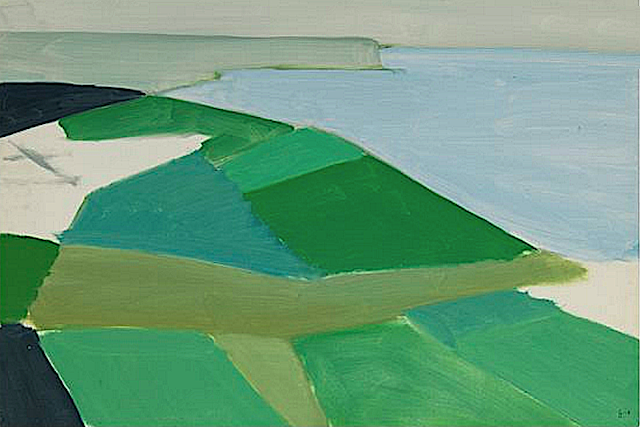NICOLAS DE STAËL (1914-1955)
Cap Blanc-Nez (151m - 495ft)
Cap Gris-Nez (45m -148ft)
Cap Gris-Nez (45m -148ft)
France
1. In Cap Blanc Nez, 1954, oil on canvas. Private Collection
2. In Cap Gris Nez, 1954, oil on canvas. Private Collection
The Mountain
Cap Blanc-Nez (151m - 495ft) (Cape White Nose) is a cape on the Côte d'Opale, in the Pas-de-Calais, in northern France. The cliffs of chalk are very similar to the white cliffs of Dover at the other side of the Channel in England. Cap Blanc-Nez does not protrude into the sea like a typical cape, but is a high point where a chalk ridge has been truncated by the sea, forming a cliff that is topped by the obelisk of the Dover Patrol Monument, commemorating the Dover Patrol which kept the Channel free from U-boats during World War II. Cap Blanc- Nez was a vital measuring point for the eighteenth-century trigonometric survey linking the Paris Observatory with the Royal Greenwich Observatory. Sightings were made across the English Channel to Dover Castle and Fairlight Windmill on the South Downs. This Anglo-French Survey was led in England by General William Roy.
Cap Gris Nez (45 m -148 ft) is situated some miles away to the southwest of Cap Blanc-Nez. It is between Wissant and Audresselles, in the commune of Audinghen. The cliffs of the cape are the closest point of France to England – 34 km (21 mi) from their English counterparts at Dover. Smothered in sea pinks and thrift, the cliffs are a perfect vantage point to see hundreds of ships, from oil tankers to little fishing trawlers, plying the waters below. On a clear day, the white cliffs of Dover on the English shore can be seen. The proximity of the cape to England led to the frequent destruction of the nearby village of Audinghen in wars between England and France. On the top of the cliff are the ruins of an English fortress, built by Henry VIII at the beginning of the 16th century.
Nowadays, as a Natura 2000 site, Cap Gris-Nez is considered as a major site of pan-European importance to be protected both for the conservation of remarkable natural habitats and for migrations of avifauna. Cap Gris-Nez is very frequented by ornithologists during the birds migrations periods (spring, autumn).
The both capes (Blanc-Nez and Gris-Nez) are declared Grands sites de France since 2011 et constitutes the Grand Site Des Deux Caps (Grand Site Of Two Caps), emblematic of the Parc regional de Caps et Marais d’Opale. The Painter
Nicolas de Staël was a French painter of Russian origin known for his use of a thick impasto and his highly abstract landscape painting. Nicolas de Staël was born Nikolai Vladimirovich Stael von Holstein (Николай Владимирович Шталь фон Гольштейн) in Saint Petersbourg (Russia), into the family of a Baron Vladimir Stael von Holstein, the last Commandant of the Peter and Paul Fortress. De Staël's family was forced to emigrate to Poland in 1919 because of the Russian Revolution ; both his father and stepmother died in Poland and the orphaned Nicolas de Staël was sent with his older sister Marina to Brussels to live with a Russian family (1922)...
- More about Nicolas de Stael biography
2017 - Wandering Vertexes...
by Francis Rousseau

